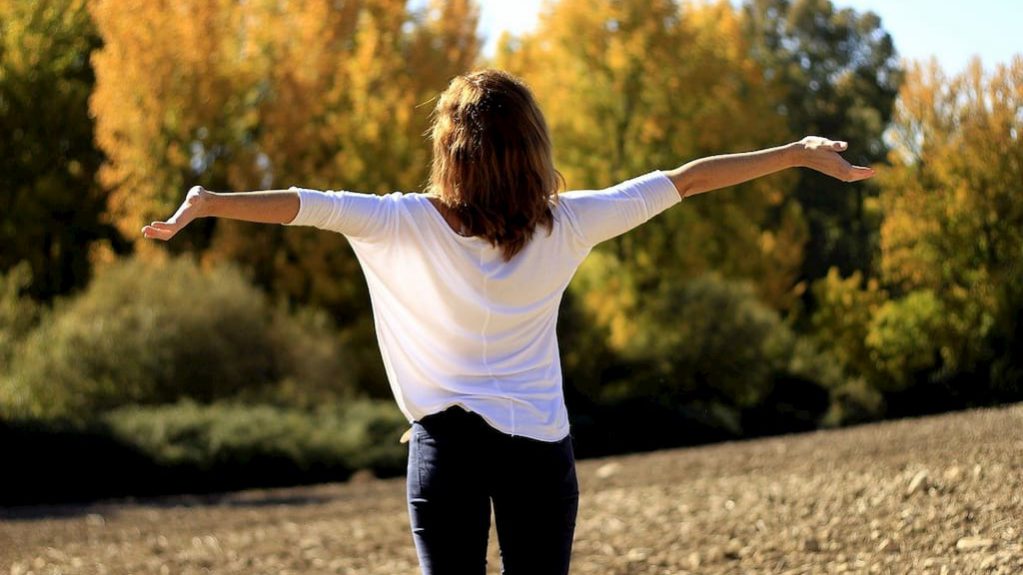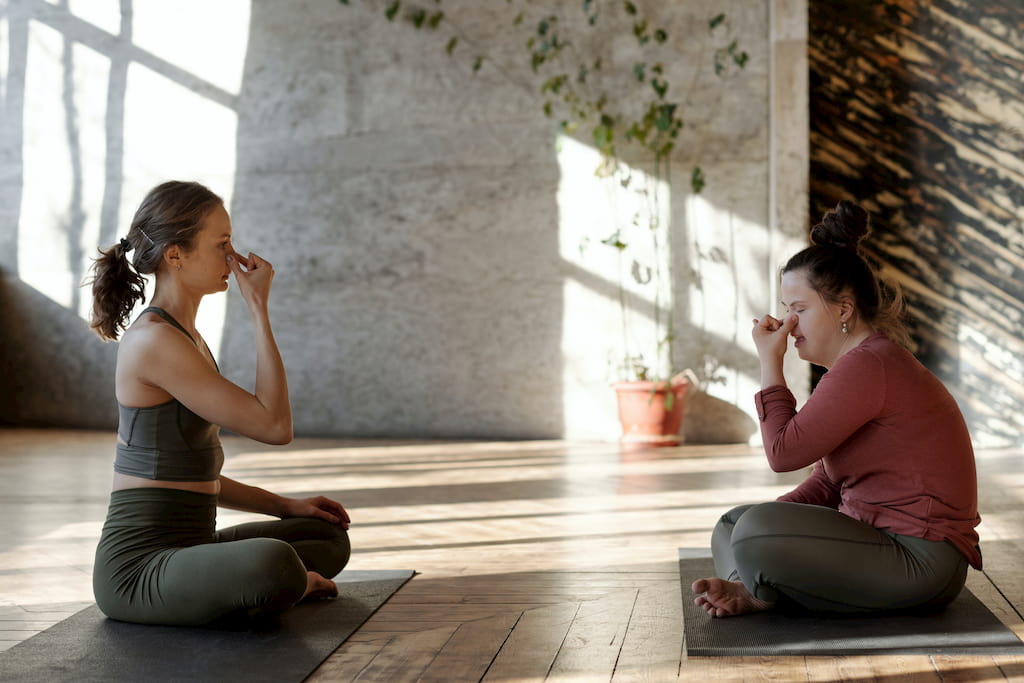Relaxing Breathing Techniques

Content
Breathing Exercises for Relaxation
Introduction
Every organism responds to their environmental conditions. As humans, we have unique responses to everything we’ve been through, every aspect of our lives. We all know that being stressed can be a physical response and impact our state of being. When we strive for relaxation, we’re searching for that stress-free zone that includes our hormonal and nervous systems along with our mental well being. Our very muscles and bones can indicate that we’re stressed. For example, when we experience pain, distress or uneasiness can manifest themselves in our joints or tendons. In this article, you’ll learn some of the breathing exercise that may help to alleviate your stress and guide you into that stress-free zone! Why is shifting our practice of breathing particularly effective? Does it require a lot of “control”? Let’s discover the answers!

What does being relaxed really mean? Let’s first start by exploring what not being relaxed looks like, by defining stress. The actual definition of stress is pressure or tension exerted on an object. Playdough, for example, reconfigures its shape based on the force applied. We humans are malleable. We move, we break, we change. We may experience stress in different forms and our responses to that stress can shift as well. Sometimes we may be moved to finish a task or project in order to lessen our stress. Or, perhaps the pressure is too much and we need to reach out for help. Our nervous system is a fundamental part of creating, regulating, and executing responses to our external world. If we can get to know our nervous system better, we may be more equipped to regulate our stress responses during particularly tough moments.
The function of our bodily systems is greatly dependent upon our breathing. One of the quickest ways to check the health of our bodies is by looking at our breath. Our breathing patterns can change based on perceived danger or risk, maybe we begin to breathe more rapidly or maybe we find it difficult to catch our breath. This is our nervous system identifying a moment of unrest. When we breathe more regularly, our nervous system translates that to mean everything is chill. As we regulate our breathing, we can suggest to our nervous system that everything is fine and give ourselves space to reach a sense of calm.
Now that we understand why breathing is so important for our bodies, how our breath can impact our thoughts and feelings, let’s identify some breathing exercises.
Proper Breathing
Before getting into the details of the many different breathing techniques, let’s determine the most effective way of breathing. Maintaining effective breathing is essential for practicing the breathing techniques we’ll describe later correctly. Unless specifically necessary, breathing should always be done through the nose. Our nose is a specialized organ made to filter and moisturize the air we both inhale and exhale. The air outside of our lungs is much drier and filled with particles and organisms such as dust, bacteria, pollen, and more. The mucus layer inside of our nose helps to prevent congestion and works to lessen the risk of infection. Breathing exercises and mindful breathing keep our respiratory tract cleaner and healthier and can reduce uncomfortable symptoms and allergic reactions in the long run.
The second most important part of our body that’s involved in our breathing process is the diaphragm. We often hear the phrase, “diaphragmatic breathing,” which is a misconception as the diaphragm is in constant use as we breathe, so there should be no such distinction. Our diaphragm divides the lungs and abdomen from other organs. So, when the lungs fill with air, the diaphragm expands downward, pushing the abdominal muscles to expand out to the sides. If you take deep enough breaths, using the lower part of your lungs effectively, your belly should expand rather than your chest. Using this lower part of the lungs is the practice of breathing that people usually call “diaphragmatic breathing,” but the air follows the same pathways. Let’s discuss some other ways you can better feel your lungs and breathing muscles before we move onto the specific techniques.
Try lying down to your back on a rather empty stomach and start to intentionally relax your tummy. Really connect with your belly, your ribs, your sternum. Start by feeling around your belly button to see if your abdominal area is tight. Is it easy for you to push your fingers into your stomach? A tight belly is an indicator of a stressed body. Remember, we tend to close down our posture to protect our internal organs when we’re in fight and flight mode! If it feels tight, that’s not an unusual experience. Now, start trying to relax the muscles around there. To do this, you can suddenly tense your muscles like someone’s going to punch you and then quickly relax them. Try to do this a couple of times and let your belly expand so that you have room for air. Observe how the air fills in and out without trying to control it. When you relax your belly, you’re telling your nervous system that you are not in danger. Calming the nervous system can relax the body, mind, and emotional state overall.
In the next step, start to feel how the body’s contact with the surface you’re lying on shifts or changes. Do you feel more weight? Do you feel more contact? As the last step, sit up and bring your hands to the sides of your rib cage. Try to breathe in, expanding your rib cage and pushing your hands outward without tightening your belly. This is the type of movement we want to have when breathing in in our daily life. If we don’t use these small muscles around the ribs, they can grow stiffer and more immobile with time, reducing our ability to take deeper breaths. I assure you your breathing behavior will start to change little by little if you practice each day. Let’s check out some specific forms of breathing exercises.

Relaxing Breathing Techniques
Pursed Lip Breathing
This technique is among the funniest and easiest of them all. Often, we may feel rushed in our bodies and with our breath. The main purpose of this particular exercise is to elongate the duration of our inhales and exhales. As we slow the pace of our breath and extend breathing time, we may improve our lung capacity, lower our blood pressure, and find a sense of calm.
To try this technique, sit anywhere that you’re comfortable. Make sure to relax your neck, shoulders, and jaw, taking a normal breath through the nose with your mouth closed. Now, purse your lips, as though you were going to blow up a balloon and start exhaling slowly between the lips. By narrowing our lips, we limit the amount of air we can expel and therefore slow the flow of air naturally. Try this at least four to five consecutive times to get the technique right. You can repeat this exercise everyday and increase the frequency with time. Habits are more likely to develop through consistency, but you can employ this technique when you feel tense or uptight to help navigate that moment. To practice this exercise consistently, choose the same time each day to give it a try.
Box Breathing
Box Breathing is an effective breath regulation technique. The reason it is called “Box Breathing” is because the technique requires that we inhale and exhale for specific counts, to form the shape of a box. We’ll inhale for four counts, hold it for four counts, exhale for four counts, and hold it for four counts. In this article, I will tell you a different way of applying the technique that may deepen your practice. Don’t worry! While it may seem confusing at first, it’s an easy exercise once you have the pattern down.
The basic version of the breath is:
- After exhaling completely, inhale slowly as you count to four.
- Hold the breath for another four counts.
- Exhale slowly as you count to four.
- Hold the breath for another four counts.
So, the breathing cycle looks like this:
You can start by trying this sequence four to five times and observing the effect on yourself. You can always adjust the repetition count to best meet your needs.
In the second version we will build on this box technique gradually by following these steps:
- After exhaling completely, inhale as you count to four, and exhale as you count to four. Repeat this for three rounds.
- Now, inhale for four counts, hold it for four counts, and exhale for four counts. Repeat this for three rounds as well.
- Inhale for four counts and exhale immediately for four counts, this time holding it at the bottom of your exhale for four counts. Repeat this for three rounds as well.
- Finally, do one breathing sequence following the original box version and repeat it three times.
The overall pattern of these sequence will look like this:
Alternating Nostril Breathing

This is one of the ancient yogic “pranayama” techniques. It is said that we have two energy channels called “ida” and “pingala” that surround our spine and start from our two nostrils. Therefore, if we balance the two sides of our nose, the breath will end up balancing two sides of our body as well as the qualities the dual energies represent. The main idea here is to bring awareness to the balance between the two nostrils and to slow down our breath, bringing healing energy to the upper respiratory tract.
To start, you will use your right thumb, ring, and little finger. You can either leave your middle and index fingers relaxed towards your palm, or if you want to make the “mudra” symbol, you can point them and press lightly between your eyebrows as you breathe.
- Sit in a comfortable position and release all the air from your lungs.
- Close your right nostril with your thumb and inhale slowly from the left nostril. Finishing the inhale, release the thumb gently while pressing to the left nostril with ring and small finger.
- Exhale through the right nostril and this time continue inhaling from the right nostril again.
- After completing the inhale, gently press the right nostril with your thumb and open the left nostril, exhaling slowly. This is one complete cycle.
As a beginner, you don’t have to count while inhaling and exhaling. Try doing this exercise around ten times. You may close your eyes if that feels comfortable for you. My advice is to do this breathing later in the day or when you need to quiet your mind. It helps to slow the body, cool the mind, and more importantly, it brings awareness to the two different sides of your breathing tract!
(PS: If it is more comfortable for you to use the left hand you can reverse everything and start from whichever side you wish.)
4-7-8 Breathing
This technique is definitely my personal favorite as it helps me fight my sleepless nights from time to time. Basically, you inhale for four counts, hold it for seven counts, and exhale for eight counts. Getting the pattern right may be difficult the first couple of times, but with patience and practice, your body will find its natural rhythm. The logic behind this technique is to saturate your body with oxygen and push yourself to take deeper breaths in a shorter amount of time. The elongation of the exhale, similar to the Pursed Lip Breathing, helps to relax the body and calm the mind. Try doing this sequence at least eight to ten times to observe the effect fully. If you intend to use this technique to improve your ability to fall asleep, try practicing even more frequently to see if it works for you.
Bonus: Anuloma Viloma
Actually, “Anuloma Viloma” and “Nadi Shodhana” are ancient names for the Alternate Nostril Breathing technique. However, most of the time the “Anuloma Viloma” technique is applied with specific counts of breath. You can think of this as a combination of Alternate Nostril Breathing and the 4-7-8 Breathing (or the Box Breathing) above. So, if you are not new to the breathing exercises and if it is not confusing for you, you may try applying the Alternate Nostril breathing with an inhale, hold, exhale pattern that follows a one:four:two sequence. What that means is, if you inhale for two counts, you should hold it for eight counts, and exhale for four counts. Here’s how the sequence maps out:
- Gently press your right nostril with your right thumb and breathe in through the left nostril for a count of two. With or without closing the left nostril, hold the breath for eight counts.
- Release the right thumb and exhale from the right nostril for four counts. Start inhaling again from the right nostril for two counts.
- Hold the breath for eight, release the left nostril and exhale in four counts This is one complete cycle.
One reason to extend the duration of holding our breath is to allow the blood circulation to carry oxygen to parts of our body with maximum efficiency.
We hope you have a chance to try these techniques and that you find them helpful! Please share your experience of practicing these breathing exercises if you are able to! Have you noticed any improvements? Are you feeling more relaxed and calm?




